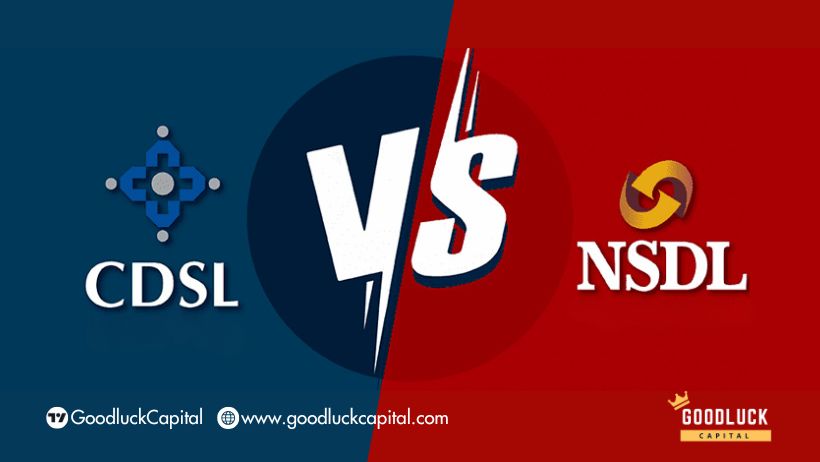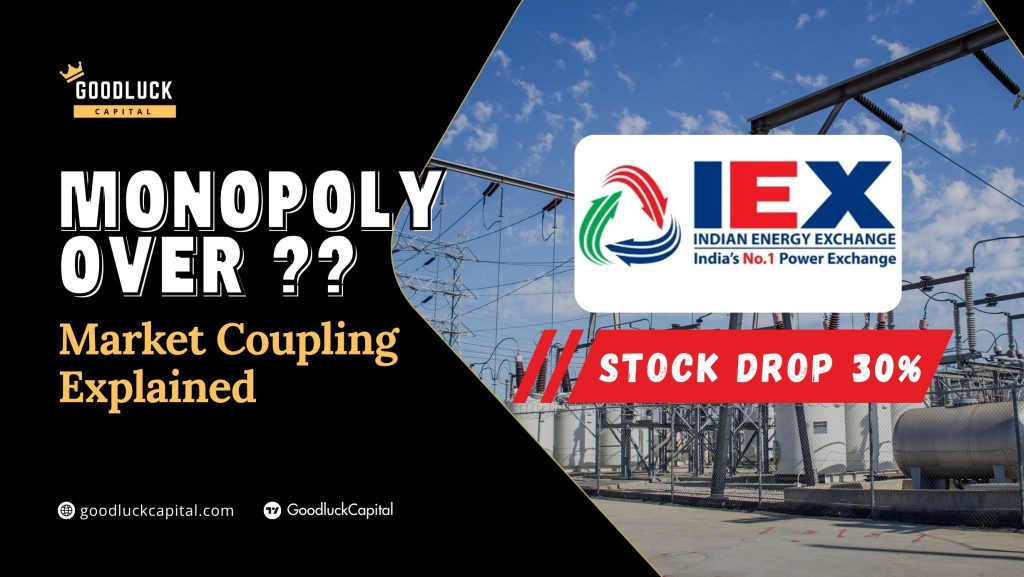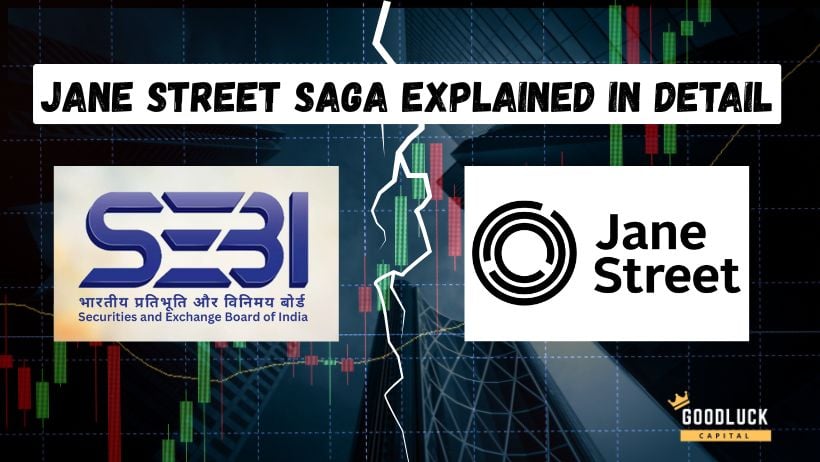NSDL vs. CDSL: A Comparative Analysis in the Duopoly Potential Listed Space of Depositories
1. Introduction
India is one of the largest capital markets in the world and now has the largest F&O volume in the global derivative market. India’s vibrant stock market market is supported by improved digitalization, a strong regulatory framework, and investor trust. India has two main stock exchanges-NSE and BSE and also has two main depositories, NSDL promoted by NSE, and CDSL, promoted by BSE.
The role of NSDL and CDSL are vital in Indian capital markets in enabling seamless, secure, and efficient securities digital trading by holding financial instruments such as shares/securities, bonds, and mutual funds in electronic (DEMAT-Dematerialized) form. Both NSDL and CDSL are regulated by SEBI and provide essential services, required for efficient digital trading that have revolutionized the Indian securities market by eliminating the earlier Harshad Mehta era risks and inefficiencies associated with physical certificates in India’s pre-economic liberation times (before 1995’s).
NSDL was established by NSE in 1996 as the first electronic depository in India. It was created to improve the efficiency, transparency, and safety of the securities market by enabling electronic holding and transfer of securities, thereby eliminating the legacy issue of physical certificates and their associated risks such as loss, theft, forgery, and damage. NSDL and electronic trading were instrumental in the ease of doing securities trading, short term trading and other related services in India instrumental in huge employment for the BFSI sector and contributed immensely to India’s economic growth story.
CDSL was established three years later after NSDL in 1999 and also provides identical depository services, facilitating dematerialization of physical securities and electronic transfer. CDSL primarily serves retail investors and operates mainly with the BSE.
Both NSDL and CDSL enjoy a duopoly in the Indian Capital market dominated by NSE and BSE
The two primary depositories in India, National Securities Depository Limited (NSDL) and Central Depository Services Limited (CDSL) enjoy a duopoly in India’s stock market infrastructure space as they are virtually subsidiaries of NSE and BSE, which controls the Indian capital market. NSDL, CDSL, and also NSE and BSE are regulated by the Securities and Exchange Board of India (SEBI), which maintains strict and enforceable regulations and have wide-ranging enforceable powers in hand, making India one of the trustiest investment destinations in the world. India’s SEBI acts as an independent capital market regulator and may have more credibility than the US SEC.
As capital market depositories, both NSDL and CDSL offer identical basic core services as mandated by the SEBI. Both NSDL and CDSL may be termed blue chip companies. The CDSL is a listed entity in NSE (as a stock exchange or its reacted subsidiary can’t list its shares in its platform/stock exchange). But despite earlier attempts since 2023, the NSDL is not able to be listed itself in BSE due to various regulatory issues with SEBI guidelines. Now NSDL may be able to list itself in BSE by July 31, 2025, if it’s able to meet certain SEBI directions & regulations.
2. Overview of NSDL and CDSL
NSDL Overview
- Incorporated in 1996 as India’s 1st electronic securities depository service (infra)
- Promoted & Founded by NSE (24.00%), IDBI Bank (26.10%), UTI (6.83%), HDFC Bank (8.95%) and also SBI, ICICI Bank, Axis Bank and Standard Chartered Bank
- As the mother organization NSE was mainly promoted by India’s leading public sector financial institutions like IDBI Bank, LICI, SBI, UTI and IFCI, The general public and investors have immense confidence in NSDL.
- First revolutionized India’s broken, but limited capital markets by transitioning from paper-based to electronic securities settlement, eliminating risks like bad delivery and delayed transfers.
- As of March 31, 2025, NSDL had DEMAT assets worth ~ INR 464.16 trillion (approximately $5.42 trillion)
- Has almost 39.5 million Demat accounts
- Has 294 DPs and 65,931 DP Service Centres covering almost all postal PIN codes in India
- Being the first electronic depository and subsidiary of NSE, the NSDL has a near monopoly (like NSE)
- Has developed a larger network and infrastructure over the years, resulting in a virtual monopoly (~90%)
- Initially had a stronger presence among institutional investors and major financial institutions, which helped it build credibility and trust in the Indian capital market.
- Over time, also expanded in retail space, making it a depository with a broad and diversified client base.
CDSL Overview
- Established in 1999, as India’s 2nd electronic securities depository service
- Was promoted by BSE (15%), and major financial institutions like LICI (4.4%) and others (~10%)
- Became the 1st Indian depository to achieve 50 million active Demat accounts in 2021 and scaled over 100 million accounts by November 2023 led by COVID COVID-related surge in retail participation in the Indian capital market
- Publicly listed company in the NSE since June 2017, with a market capitalization of around INR 0.30 trillion
- As of March 31, 2025, CDSL has around 150 million DEMAT (investor) accounts, consisting of assets for INR 70.52 trillion (~$0.82 trillion) along with 574 depository participants (DPs)
In Summary, both NSDL and CDSL offer identical core services, including (DEMAT-converting physical securities to electronic form), rematerialization (REMAT-converting again to paper/physical securities from electronic form), electronic transfers, corporate actions, and pledge/hypothecation, ensuring seamless securities management. However, NSDL has some strategic advantages compared to CDSL.
3. Difference between NSDL and CDSL
Market Share and Scale
As a target audience (clients), the NSDL caters primarily to institutional investors, custodians, and FPIs, with advanced services tailored for high-value transactions, while CDSL focuses on retail investors, with accessible platforms and a larger number of Depository Participants (DPs).
Overall, the NSDL is preferred by institutional investors and those seeking diversified services like TIN, NAD, and PAN facilitation. Its advanced infrastructure and NSE affiliation make it ideal for high-value, complex transactions. The CDSL is better suited for retail investors due to its user-friendly platforms (EASIEST, Myeasi), e-Locker, and insurance repository. Its larger DP network enhances accessibility.
NSDL Dominance in High-Value Transactions
- NSDL’s 90% market share due to strategic focus on institutions and HNIs may result in higher ARPU (Average Revenue Per User) compared to CDSL
- CDSL focuses on a larger number of retail clients having smaller assets, resulting in lower ARPU
- As India’s capital markets deepen, NSDL is better positioned to benefit from the growing retail participation along with institutions.
NSDL’s NSE Affiliation
- The NSE’s near monopoly in equity and derivatives (FNO) trading provides NSDL with a steady flow of high-volume, high-value transactions.
- With India’s equity derivatives (FNO) market among the largest globally, NSDL’s alignment with NSE ensures sustained growth in transaction-based revenues, giving it an edge over CDSL’s BSE-centric operations, which is far behind NSE in terms of overall trading volume.
Diversified Business Model
- NSDL’s subsidiaries, such as NSDL Payments Bank and NSDL Database Management Limited, diversify its revenue streams beyond the core business of depository services
- NSDL ventures tap into digital banking and data management, areas with significant growth potential
- NSDL’s diversified revenue streams make it a resilient choice for long-term investment, while CDSL’s retail focus aligns it as a short term trading stock in India.
- CDSL, while innovative, lacks a comparable ecosystem, having negligible diversification, making NSDL a more diversified investment
Local & Global Reach and Scalability
- NSDL’s presence in 189 countries and its extensive service network across almost all Indian pin codes signifies its global & local reach
- As FPIs are increasingly participating in India’s capital markets, NSDL’s extensive network, infrastructure, and reputation make it the preferred choice for global & local institutions, supporting long-term growth prospects.
- CDSL’s global reach is limited
Virtual Monopoly among institutional clients
- NSDL, being the first electronic depository in India, backed by NSE and some other leading financial institutions of India has many more institutional clients than CDSL
- NSDL has long-term relationships with India’s big institutional investors like mutual funds, banks, insurance companies, and also FPIs (Foreign Portfolio Investors)
- NSDL asset base is skewed more towards large-ticket transactions and long-term holdings, which tend to offer higher ARPU to CDSL’s largely retail-focused base, typically volatile in line with market volatility
Higher Average Revenue per User (ARPU)
NSDL has historically demonstrated higher ARPU because:
- Its DEMAT accounts typically hold higher-value securities
- It services a clientele that is less sensitive to transaction charges
- It earns more from ancillary services such as e-voting, pledge confirmations, and KYC records for institutions
- This positions NSDL to generate better ARPU than CDSL
Potential for Margin Expansion
- Given the rising compliance requirements (SEBI’s push for enhanced reporting, faster settlements, etc.), institutional reliance on depositories is increasing.
- NSDL, already dominant among large institutions, stands to benefit disproportionately — opening up avenues for margin expansion
- Moreover, as NSDL scales its retail footprint (where CDSL is stronger today), it could achieve a best-of-both-worlds scenario: strong institutional business + growing retail adoption.
Stronger Brand Trust
NSDL is often associated with “security” and “trust” among institutional investors. Its promoters include marquee names like IDBI Bank and NSE (National Stock Exchange), adding further credibility to its brand. This institutional backing could be a key asset as it expands into newer value-added services.
But What about CDSL
CDSL has been a stellar performer in the stock market, particularly post-2020 (COVID), benefiting from:
- A massive surge in retail investors
- Lower account-opening costs
- High operating leverage
- However, with the retail boom showing early signs of normalization, and increasing competition from fintech platforms (like PayTM) offering bundled services, CDSL’s supernormal growth rates may moderate
- Additionally, CDSL’s relatively lower ARPU compared to NSDL could become a drag if transaction volumes stabilize or decline.
NSDL-IPO Fiasco
The stock market is long-awaited with NSDL’s IPO, which enjoys a near monopoly in India’s duopoly space of electronic depository service, the infrastructure backbone of India’s vibrant capital market, and over $5 trillion in market capitalization. For investing in India’s capital market infrastructure, NSDL’s IPO offers a unique opportunity. NSDL’s strong fundamentals position it as a compelling long-term investment, while CDSL may suit short term trading strategies in India. NSE affiliated NSDL’s competitor CDSL was listed in June 2017 at INR 250 against IPO price band INR 145-149, almost 70% premium and subsequently scaled around INR 1990 in mid-December 2024 in line with higher market volumes and retail selling. The market is also expecting such Steller performance from NSDL after likely listing by July 2025. NSDL’s much-awaited IPO (OFS) is currently on hold since 2023 DHRP by SEBI due to some regulatory hurdles over NSE collocation and NSE’s stake over the 15% prescribed limit in NSDL.
NSDL IPO-Delayed due to various SEBI regulatory and other hurdles
- NSDL filed its DRHP with SEBI on July 7, 2023 for its IPO/OFS
- But in August 2023, SEBI placed the NSDL IPO on hold, due to pending investigations and regulatory concerns related to its main promoter or major shareholder NSE (24% stake)
- The SEBI granted final approval for the IPO on September 30, 2024, after lifting an earlier abeyance
- But the deadline of April 2025 is set to expire as NSDL was unable to meet SEBI regulatory demands
- Now SEBI has again extended the IPO deadline to July 31, 2025
- The NSDL, suffering from manpower is now racing against time, but trying its best to secure all necessary approvals, especially for a Market Infrastructure Institution (MII) from an Indian government agency
- The SEBI abeyance was due to NSE’s non-compliance with ownership norms, as NSE’s 24% stake in NSDL exceeds SEBI’s 15% cap for stock exchanges holding shares in depositories
- SEBI froze voting rights and corporate actions for NSE’s excess shareholding above 15% until divested
- Subsequently, the abeyance was lifted by December 2023, but SEBI’s final observations were delayed until September 2024
- Additional Approvals for Market Infrastructure Institution (MII)- governance norms/regulation for depositories
FY25 Financials requirement may now delay further the NSDL IPO launch
- Due to the prolonged approval process, NSDL may need to update its financials in an addendum to the DRHP
- A significant time has passed since the initial filing in July 2023
- This requirement for the latest financials could further delay the NSDL IPO launch
Has the NSE IPO fiasco caused NSDL’s IPO approval delay?
The NSE has been facing various SEBI regulatory hurdles in its maiden IPO/OFS launch since December 2016. The SEBI has repeatedly postponed NSE IPO approval due to regulatory compliance issues and also NSE Server co-location alleged scams in the past along with violations of securities contracts rules. In March 2025, SEBI prescribed the NSE to suspend the IPO plans for up to two years to resolve these legacy issues including the procurement of some required NOCs. The issue of the NSE IPO may be one of the primary reasons behind NSDL IPO delays also as NSE is the de-facto promoter and the 2nd largest shareholder in NSDL with 24.00% stake, after IDBI, the largest shareholder with 26.10%.
Conclusion: NSDL-A Compelling Opportunity?
NSDL and CDSL have Duopoly in India’s depository service space, but NSDL has the edge
Both NSDL and CDSL are integral to India’s financial markets, offering secure and efficient depository services. However, NSDL stands out as a better opportunity in the potential listed space due to its market leadership in asset value, strategic NSE affiliation, advanced technological offerings, and the untapped potential of its upcoming IPO.
For investors seeking a higher quality, institutionally anchored, profit-rich depository play, NSDL could be a better long-term opportunity. Its strong ARPU, brand trust, and strategic institutional relationships set it apart. If NSDL successfully leverages its retail growth ambitions without losing focus on its institutional dominance, it could outperform CDSL in both earnings growth and market perception. However, entry/listing price and valuation discipline remain critical.
While CDSL benefits from its retail dominance and established listing, its high valuation limits its upside compared to NSDL’s fresh entry into the public market. For investors seeking exposure to India’s growing capital markets, NSDL’s scale, institutional focus, and diversified ecosystem make it a compelling choice.
Investors should closely monitor NSDL’s IPO developments and conduct thorough due diligence, considering factors like equity dilution, valuation, market conditions, and investment objectives. With its robust fundamentals and strategic positioning, NSDL is poised to outshine CDSL as a high-growth opportunity in the listed depository space.
NSDL stands at a strategic inflection point — combining its dominant institutional presence, superior revenue quality, and brand trust to capitalize on India’s rapidly expanding capital markets ecosystem. As regulatory tailwinds (faster settlements, higher compliance norms) deepen reliance on depositories, NSDL’s higher-margin, institutionally driven business model positions it for sustainable, profitable growth. While listing delays and regulatory compliance are short term hurdles, they do not alter the underlying strength of the business. For long-term investors, NSDL offers a rare opportunity to participate in the critical financial market infrastructure story of India, potentially at an attractive entry point if IPO valuations are reasonable.
NSDL: Potential IPO Valuation
| Parameter | NSDL | CDSL |
| Establishment | 1996 | 1999 |
| Promoters | NSE, IDBI, UTI, HDFC | BSE, SBI, HDFC, StanC |
| Listing Status | Still Unlisted | Listed on NSE – June’17 |
| Expected Listing | BSE – July’25 | NA |
| Market Cap | NA (Unlisted) | ~INR 0.30T |
| IPO Details | INR 30B OFS | NA |
| DRHP Filed | July’23 | NA |
| DEMAT accounts | 39.45M (ACTIVE) | 152.98M (Incl. Closed) |
| DEMAT Asset Value | INR 464.16T | INR 70.52T |
| Number of DPs | 294 | 574 |
| Market Share-DAV | ~89% | ~11% |
| ARPU | Higher (Institutional ticket size) | Lower (Retail Ticket Size) |
| Cons. REVENUE (INR Cr.)- FY24 | 1365.7 | 907.3 |
| FY24 EPS (INR) | 13.77 | 40.11 |
| TTM EPS | NA | 26.58 |
| TTM PE | NA | 50 |
| SECTOR PE | NA | 45 |
| AVG. PE | NA | 75 |
| EPS CAGR(%) | 38 | 73 |
| PB | 13 | 18 |
| Key Affiliations | NSE | BSE |
| Client Focus | Institution. HNI, FPI | Retails |
| Geographical Reach | 189 countries + 99% India | India-Extensive-Retail |
| Subsidiaries/Diversification | NSDL Payments Bank/Database Management | Limited diversification |
| Revenue Sources | Transaction fees, account maintenance, corporate actions, subsidiaries | Transaction fees, account maintenance, corporate actions |
| IPO Valuation Potential | Potentially lower entry valuation than CDSL’s current multiples | High valuation (18.6x book value) limits upside |
| Regulatory Challenges | NSE’s 24% stake exceeds SEBI’s 15% cap; IPO delayed due to approvals | Fully compliant; no major regulatory hurdles |
| Investment Upside | High, driven by IPO, market leadership, and institutional focus | Moderate; retail focus limits asset value growth |
| Risks | Regulatory delays, NSE-related scrutiny, market volatility | High valuation, retail market saturation, market volatility |
NSDL filed the DHRP for its maiden IPO in 2023. which was an OFS (Offer for Sale) of 57, 260, 001 equity shares by six major shareholders, including the NSE, IDBI Bank, SBI, HDFC Bank, Union Bank of India, and the Administrator of the Specified Undertaking of the Unit Trust of India (SUUTI). There will be no equity dilution after the proposed IPO/OFS.
This translates into the base price of the proposed IPO/OFS around INR 524/share considering the present unlisted market price band (900-1100) along with Grey Market Premium (GMP) of around INR 250 and intended lower P/B multiple around 10-12 vs CDSL’s 16, the IPO price band may be around Rs. 750-900 (average 825) as a moderate estimate.
There are conservative to aggressive estimates ranging from INR 700 to 1200 reflecting on CDSL’s IPO response (170x over subscription) and NSDL’s market leadership and actual financials. NSDL may file a fresh DHRP along with updated financials and then may fix the IPO price band. We, at Sharescart.com may also provide updated information in the coming days.
The FY24 EPS if NSDL is Rs.13.77 and assuming conservative 30% growth against 38% CAGR for the last five years, the estimated FY25 and FY26 EPS should be around 17.90 and 23.27; assuming average PE of 50 in line with CDSL and considering the scarcity premium of listed depositories and monopoly nature of the business model, the projected fair value of NSDL for FY27 should be around INR 1165-1200. As the stock market generally discounts 1-2 years of earnings potential in advance, NSDL may scale INR 1200 soon after listing.
Bottom line:
Depending upon the actual IPO launch and listing day, updated financials, management guidance, volatility of India’s capital market, and underlying investor sentiment, NSDL’s proposed IPO may be priced around INR 825 to 900. In the listed space, NSDL may provide a better investment opportunity than CDSL due to its almost 90% monopoly in India’s electronic depository service business owing to NSE affiliation and focus on big-ticket institutional clients and transactions. Both CDSL and NSDL may continue to enjoy high valuation (PE) due to scarcity premium in the listed depositories market.
If you’re interested in trading or investing in the stock market but lack the time or expertise to find trading opportunities yourself, explore our expert-guided plans:
Short Term Trading Advice Plan – Optimized for active traders seeking strategic stock picks.
Long-Term Investment Plan [internal linking] – Tailored for wealth-building through fundamentally strong stocks.
We provide actionable stock advice for both short term trading and long term investing, helping you make informed trading decisions without the hassle of self-research.
You can also join our Telegram Channel and WhatsApp Channel for regular stock market analysis, insights and advice.
Disclaimer: This information is for educational purposes only and does not constitute investment advice. Investors should consult certified financial advisors and review official documents before making investment decisions. Securities markets carry risks, and past performance does not guarantee future results. Investors should monitor official IPO announcements for updated financials, and timelines and conduct due diligence, as market conditions and regulatory developments could further influence the launch and IPO price.





